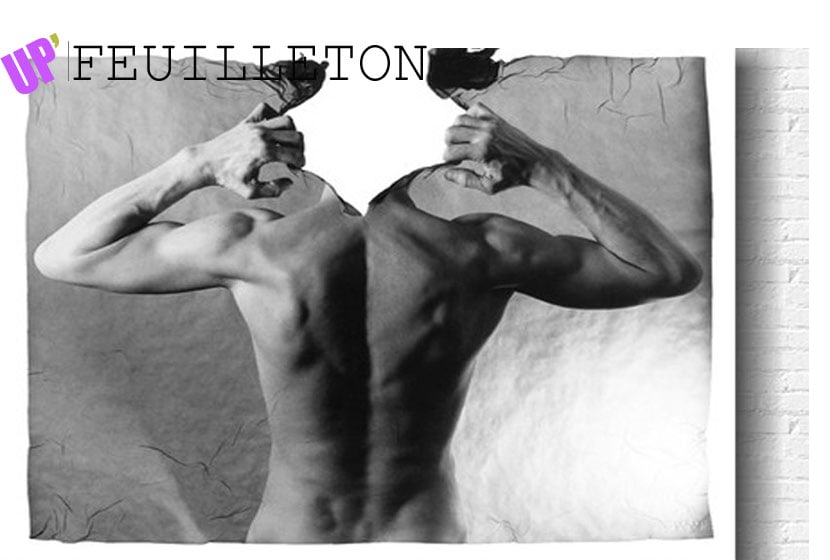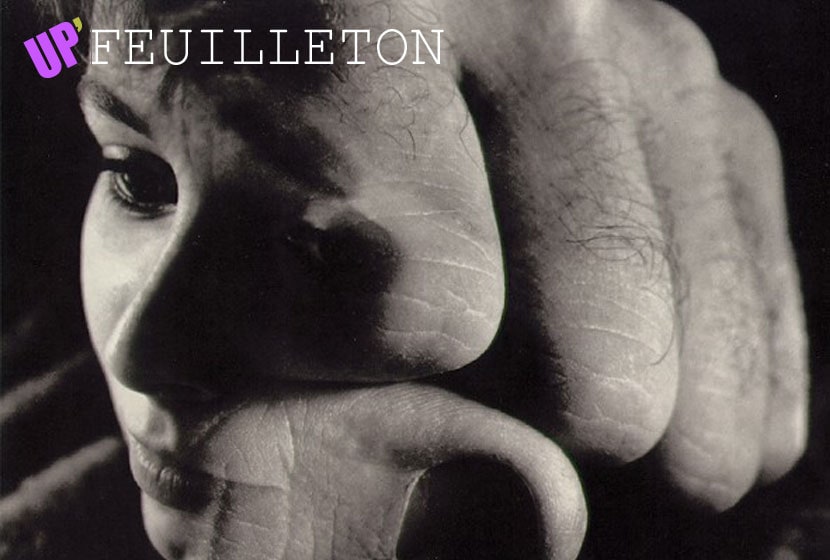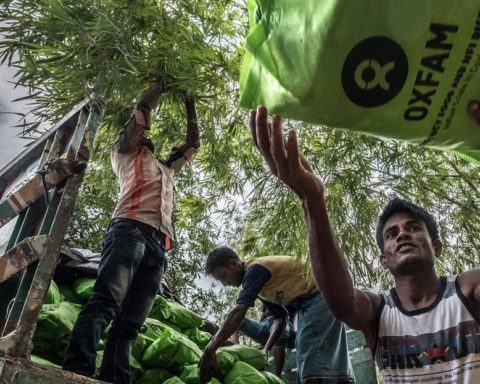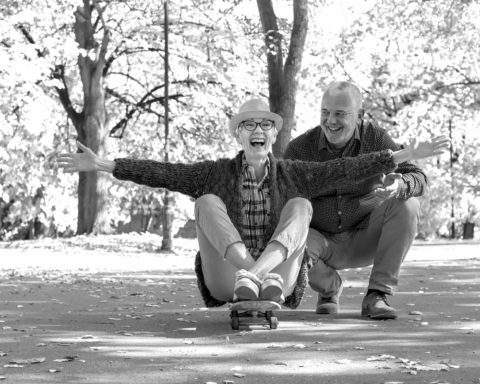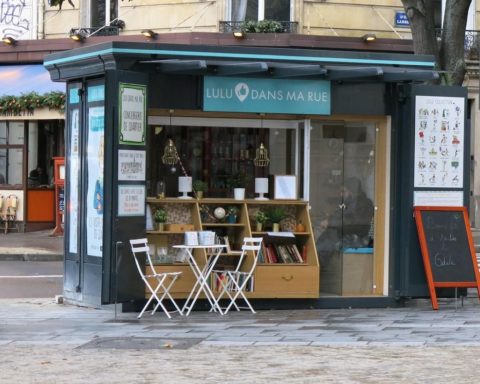Every week, UP' offers you the opportunity to discover a work in the UP'Spirit tradition, that is to say optimism against all odds, and the highlighting of innovative initiatives and daring entrepreneurs. To inaugurate this editorial anchoring, we are offering you a preview of the best extracts from one of Christine Marsan's latest books, "Entrer dans un monde de coopération - Une néo-RenaiSens" (Entering a world of cooperation - A new meaning). First chapter.
"Man did not become human by breaking with the animal, and he greatly increases his humanness by making peace with it. The animal must first of all be considered as a guest in the man's house. » Dominica Lestel
Ten years ago, we wrote a book (1): L'imaginaire du 11 septembre. From the ashes emerges a new world. The aim was to demonstrate that events such as the fall of the Berlin Wall on 9 November 1989, followed by the fall of the Twin Towers on 11 September 2001, are founding moments for understanding the roots of our world in turmoil.
The fall of the wall not only reunited Berlin and Germany, it also marked the end of communism, allowing capitalist ideology to develop. Gulags and aparatchiks deflected the original intentions and the spirit of community could not withstand the greed of a few. As a result, this left a gaping hole in the thinking, in the aspirations of many citizens who no longer had an ideal to aspire to. Since then, only capitalism has reigned supreme, which in turn has gone astray into deregulated liberalism.
 September 11, 2001 sounded the death knell for unbridled liberalism. The symbols of speculation having been affected, Ground Zero was then the new godsend announcing for a few years disarray and chain crises.
September 11, 2001 sounded the death knell for unbridled liberalism. The symbols of speculation having been affected, Ground Zero was then the new godsend announcing for a few years disarray and chain crises.
"We are even dealing, with the attacks on New York and the World Trade Center, with the absolute event, the "mother" of events, the pure event that concentrates in it all the events that never took place. "Jean Baudrillard
Obviously, between the event itself and the disintegration of the model it represents, it takes a certain amount of time to understand what is happening and to identify keys to reading that are operative. About a decade is needed for the significant changes to be visible and interpretable. La vitalité d'une néo-RenaiSens is thus the continuation of the work on L'imaginaire du 11 septembre, it aims to appreciate the road travelled in order to envisage the future with a greater variety of possibilities.
The choice of a symbolic analysis
"This pooling of suffering evokes something like the formation of a new community of humans whose links would be both biological and symbolic. »
Jean-Claude Guillebaud
In L'imaginaire du 11 septembre, we decided not to focus on current events but to make a symbolic reflection on these events, highlighting the archetypes present in order to show how they revived our imagination and allowed us to conceive something else: to encourage the emergence of a world in gestation. "The symbolic expression expresses man's effort to decipher and control a destiny that escapes him through the darkness that surrounds him.(2) "This choice of the symbolic was also an opportunity to take a step back from current events.
In this book we continue this journey using the reference to the symbol as a distancing from the object of study. We then regain the possibility of exercising our free will. For our consciousness allows us either to decide to remain stuck by the vicissitudes of life, or to take the salutary distance involving free reflection, decision and action.
Finally, to be interested in the symbolic is to identify the roots of our imagination which shapes our thinking, our values, our representations and then conditions our commitments and our actions.
The return of the sacred
Another reason led us to examine September 11th in terms of symbols and archetypes. It seemed essential to us to make visible the materialization of the quest for meaning, the very one that allows us to build unifying visions. Indeed, what characterizes the modern world is a disinterest in the sacred. Following the Nietzschean "God is dead", it was the turn of the subject to be crucified.
 The two World Wars of the 20th century, the butchery of the trenches of the First and the deliberate exterminations of part of humanity during the Second have called into question the very status of being conscious of Man. What can he still be subject to after having destroyed or allowed millions of human beings to be exterminated in gas chambers, three genocides or following the fall of the two atomic bombs?
The two World Wars of the 20th century, the butchery of the trenches of the First and the deliberate exterminations of part of humanity during the Second have called into question the very status of being conscious of Man. What can he still be subject to after having destroyed or allowed millions of human beings to be exterminated in gas chambers, three genocides or following the fall of the two atomic bombs?
Since then, Man has been wandering, lost, without any proper symbolic landmarks. Each one crumbling in the face of the violence of raw reality (3). However, human beings cannot do without culture and symbols, unless they sink totally into animality. The latter is certainly very close, always at the bottom of our determinisms, but the will to develop the Humanity of Man is even greater. This is what is gradually advancing the consciousness of the human being over the centuries and now over the decades.
To evoke the loss of the sacred is also to recognize its conscious or unconscious quest. A quest that can be found in the fact of adding a number of banal elements to everyday life: a book, a film, a television series with the adjective "cult" ... An abusive use that makes sense and tells us that if we do not follow one, in common, cults of all kinds flourish. Each has its own. If everything is "cult", perhaps society is desperately crying out, without being heard, the need for a unifying "cult", i.e. to rediscover transcendence, cultural, religious and sacred. In a word, the substance of the essential.
Finally, the resurgence of communities, springing up everywhere, coming together around different causes (4) , reflects this need to recreate links, new social norms, codes, landmarks, identities and rituals. These are all characteristics that are specific to the constitution of the social and cultural. A new form of religare to be taken into consideration.
The power of archetypes
Various clues within the social body confirmed the return to the forefront of the devil archetype. We assumed that his media coverage probably had something to make us understand that it was a matter of highlighting him. In 2001, we noted the use of moralistic statements invoking the struggle of good against evil, then the devil was very quickly mentioned, followed by medieval references to the "crusade" or "the eradication of evil"; then the repeated use of the term "return", whether it be "return to the Middle Ages", or "return to the good old days" or "return of the repressed" (5); and finally the parallel between "end of history" and "end of the world" rekindled how millenarianist fear could play a role in this singular moment.
What were the social and symbolic ingredients at work in this historical rehearsal? In addition to the frequency of use, it was also the speed with which society took hold of these terms that made us say that they had to reflect something of the times.
The Teachings of the Etymology of the Devil
We propose a kind of chronology in the names of the devil that could retrace the journey in the collective imaginary, conscious and unconscious of the evolution of our civilization.
First of all, Satan, the adversary against whom we are fighting, revives age-old battles, dualities and oppositions, value judgments and moral debates. Then comes the devil, separator of symbiosis and duality, officiating violence, establishing chaos, a phase of indifferentiation, confused, swarming, where everything is mixed, where the dionysiac and the orgiastic feed on confusion and revives the societal Eros. Thus, this devil of the first hour, "incarnated" by all these polymorphic figures, wallows in the humus of our fantasies, of our desires so long suppressed. He violently upsets the established order. He awakens the energy of primordial life (6), and in his function as a third party encourages us to separate the wheat from the chaff and prepares the bed of Lucifer (etymologically: bearer of light).
Coming out of the darkness, it explicitly enjoins us to mobilize our consciousness, to think about our humanity, to revisit the values that are the foundation of our society, to distance ourselves from the chaos left by the devil. From the matrix of possibilities, it invites us to build a new meaning, new foundations, it brings light and acts as a guide to lead humanity towards new lands. And this cannot be done without the contribution of the devil (deer, creative inspiration, inner guide).
What we observed in the interviews conducted after the attacks was that popular wisdom had understood that the first step was to begin with an individual examination of conscience. To reflect, to take the time to understand these events before embarking on any new action. Feeling powerless at the global level, citizens turned inward and took action locally. This call to introspection, then to the decision to act in conscience and finally to manifest free will reflects the influences of Lucifer and the demon (7) .
Thus what was visible and widely mediatized in 2001 was the spectacular facet of the devil and Satan (part of the shadow), for all that two other synonyms of this archetype, Lucifer and deimon were equally if not more operative, paradoxically relegated to the shadows, to the unconscious and the invisible, whereas they are precisely the bearers of the lights of the future. And a decade later we observe the fruits of this.
Dialectical constant of shadow and light: to conceal a part of our reality like the symbolic significance of words or events prefigures "returns of the repressed", resurgences of what is you. The minor returns in major as the dance of life.
 We continued our demonstration, seeking to identify how these phenomena were indicative of a paradigm shift in our society.
We continued our demonstration, seeking to identify how these phenomena were indicative of a paradigm shift in our society.
Various factors underpinned this assertion, notably the evolution of founding myths, with the failure of paternal authority on the one hand and the slow decomposition of the pyramidal, patriarchal and hierarchical system on the other, the resurgence of both the feminine and the maternal contemporary of the emergence of matrix organizations and network functioning and the return to communities. A cocktail of archetypes : the devil, the great Mother, the androgynous and references to moments in history : the Middle Ages, the 19th century, first peoples have sharpened our curiosity and pushed us to explore the links that these periods and symbols could create as meaning. We have seen the ashes of a model for the emergence of a new world.
In addition, we observe a significant rise in individual and collective violence, the virulence and intensity of which suggests that the social body is trying to express something that needs to be decoded. This is in order to curb this devastating violence and prevent it from producing another spectacular explosion. A passage through chaos and mythological primordial waters brings the world afterwards. This is how we had seen in violence the instability that is characteristic of a major change in a civilization and/or society.
Indeed, how can we fail to see the parallel with the theogony ofHesiod relating to Greek mythology? According to Hesiod, in the beginning there existed the god Chaos, formless, bottomless, a kind of unfathomable and infinite nothingness from which Gaia was born, ex nihilo. It was then the Great Mother, the goddess Earth, who gave life to the world by creating Ouranos (the sky god). These made the first gods come to power in violence since Gaïa separated from Ouranos to create the world, space and time thanks to the help of her son. Kronos who emasculated his father. The world was thus created from the primordial violence of castration and incest (8).
In the imagination of September 11th we find the same sequences, the prerogative of chaos (1990s, effect of the discoveries of quantum physics entering the economic world), the event of September 11th 2001 (destructive violence, Ground Zero: hole, gap, crucible) and the return in force of the myth of the Great Mother (ecology, environment, rise of so-called "feminine" values), this to bring about a new world that we call RenaiSens. There is a kind of preponderance of mythological sequences feeding the imagination which will then release the force necessary to take new actions.
This fundamental change questions the very nature of our humanity and invites us to redefine it and identify what we want for its future. And to do this, we must find the vitality necessary for our RenaiSence, or else, deaf and blind, we continue in the same mode and risk disappearing through excesses of madness and blindness.
"Men build too many walls and not enough bridges. » Isaac Newton
 ©Christine Marsan, Psycho-sociologist - "Entering a world of cooperation. Une néo-RenaiSens " - Editions Chronique Sociale, 2013.
©Christine Marsan, Psycho-sociologist - "Entering a world of cooperation. Une néo-RenaiSens " - Editions Chronique Sociale, 2013.
(1) La vitalité d'une néo-renaiSens was written in 2011 and updated in 2012 for publication in early 2013.
(2) Chevalier J., Gheerbrant A., Dictionnaire des symboles, Robert Laffont/Jupiter, 1982.
(3) Distanciation that could be found through the virtual. The media (Internet, Smartphone, video games, social networks) might be today's new distances, "media" that could reveal new symbolic properties? Flattening of 2D reality or on the contrary 3D distancing? The debate remains open and we will be attentive to the results of research to take a position.
(4) Communities are being formed around leisure activities as well as humanistic or charitable actions, or even sports. It is their multiplication that suggests that the need to come together again becomes powerful and necessary.
(5) See Vocabulaire de la psychanalyse, Laplanche and Pontalis, Quadrige, Puf, 1967. And also Le dictionnaire de la psychanalyse, Elisabeth Roudinesco and Michel Plon, Fayard, 1997. The return of the repressed is the return out of the unconscious of psychic contents that are repressed because they are unavowable or irreconcilable. They can take the form of psycho-pathological symptoms, dreams, missed acts, lapses, etc. ("Le Refoulement", in Métapsychologie, 1915). http://www.universalis.fr/encyclopedie/retour-du-refoule/
(6) Let's take a look at the buzz around Harlem Shake these days: a syncopated dance mixing playfulness, jerky rhythm and sexual simulations reminiscent of life's urge to manifest itself. This "primal", even "bestial" manifestation for some people represents once again the archetype of the devil: shocking, disruptive and always provoking the moral, bourgeois or religious order. Let us recall that Harlem Shake comes to confront, through dance and play, a political crisis in Tunisia where islmamism and democratic appetite are opposed like two dichotomized visions of reality. http://next.liberation.fr/musique/2013/02/18/le-harlem-shake-a-deja-fait-plus-de-44-millions-de-victimes_882612 ; http://www.liberation.fr/monde/2013/02/27/le-ton-monte-autour-du-harlem-shake-a-tunis_885080?xtor=EPR-450206
(7) Revised excerpt from L'imaginaire du 11 septembre, op.cit.
(8) We see the impact of Greek mythology on Freud's psychoanalysis.

